
Nibiru and the Dead Sea Scrolls
An underlying assumption of mine about Nibiru is that ancient knowledge of its existence was passed down through the generations and crossed cultural lines. Thus, although the original textual references cited by Zecharia Sitchin (1) are Sumerian, Akkadian and subsequently Babylonian, the secret and holy knowledge of the Celestial Lord passed to the Egyptians, the Jews and eventually even European esoteric schools (2). The form of that knowledge has evolved over the millennia as the given culture has wrapped up the secret knowledge in its own contextual framework.
In the Messianic Era preceding Christ, the Jews had a fervent expectation of the return of the Messiah to wrap up the ‘end of days’ with general Apocalypse and Judgement. The term ‘messiah’ was actually a rather generic one during Jesus’ time, and could be used to refer to the Jewish king of the House of David, or even to the High Priest (the ‘Priest Messiah’) (3). During the Roman occupation of Palestine, the expectation of the return of the Messiah also took on a political and military significance for Jews.
My interest lies in whether the return of the Messiah was actually synonymous with a much older tradition, that of the return of the Celestial Lord. Did the Jewish people incorporate Chaldean beliefs about Marduk into their scriptures during their captivity in Babylon? After all, there are several similarities between Jesus Christ and Marduk. Was the expected return of the Messiah a Jewish cultural rendering of the timing of Nibiru, the Celestial Lord? If so, then Nibiru/Marduk may have been the Messianic Star, and Jewish calendars could contain clues for Nibiru’s return.

Sitchin proposed that the Jewish Count of Years dating back to 3760BC marked a perihelion passage of Nibiru (4). In order to investigate the evidence from Judaism farther, I have been looking closely at newly published data about the Dead Sea Scrolls. After all, information sourced directly from the Jewish Qumran sect during the Graeco-Roman period should hold clues about these cross-cultural mythical ties. There was clearly an expectation of the Messiah in the Qumran community and, although there are no New Testament writings among the scrolls, the later Qumran sect was contemporaneous with early Jewish Christians in Jerusalem (5).
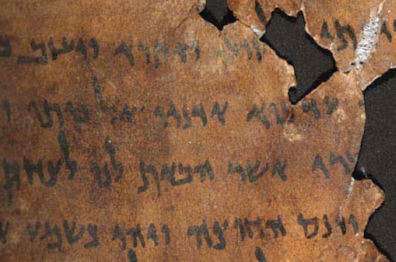
In the scrolls the references to messianic activity seem to point to the coming of “three messianic figures: a prophet, star/sceptre and priest” (5).
The Star is alluded to in the Oracle of Balaam (Numbers 24:15-17: ‘A star shall arise from Jacob and a sceptre from Israel’), and this plurality of messianic figures fits neatly with the Melchizedek scrolls of Cave 11 which portend a “heavenly deliver (not an earthly messiah) in the form of a high priest” [original emphasis] (5). There is a conviction within the scrolls of being ‘in communion with the heavenly cult and the angels’, and the Songs of the Sabbath Sacrifice continues a ‘tradition of communion with a heavenly cult found in Ezekiel’ (5).
The Songs of the Sabbath Sacrifice
The Songs of the Sabbath Sacrifice are very suggestive of a glorious celestial vision, where the cherubim of the twelfth song are ‘almost indistinguishable from the wheels of God’s throne-chariot’ (5). But it’s the structure of the songs that is really interesting. They were designed to be used in worship over the first 13 sabbaths of the year.
“They also exhibit a chiastic (mirror-pattern) structure, as follows, with the first six balancing the last six in reverse order. In such structures the central element (here the 7th Sabbath song) usually provides the clue to the meaning of the whole” (5).
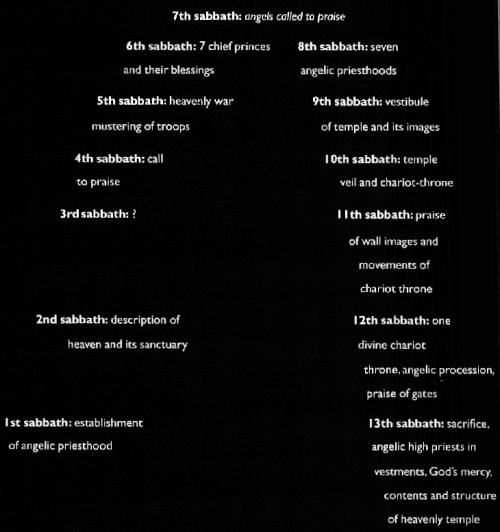
As can be seen from the diagram, reproduced from ‘The Complete World of the Dead Sea Scrolls’, this leads to a diagrammatic structure that is essentially parabolic in character. Let us, for a moment, assume that God’s ‘throne-chariot’ is the returning Nibiru, a brown dwarf with its own collection of moons/planets. Does the literary parabola describe its perihelion passage? There are suggestive elements here, certainly. The first sabbath describes the establishment of angelic priesthood, the second a description of heaven and its sanctuary. These initial songs would describe Nibiru’s initial appearance and the developing celestial halo.
The 7th song would mark perihelion, where the angels are called to praise at the culmination of the literary structure. Also notice how the songs immediately pre and post perihelion describe 7 ‘chief princes’ and 7 ‘angelic priesthoods’ respectively. As Nibiru was near its closest point to the Sun, then the image of its own moons/planets would be most striking at that time, as I have described in my book (6). Are the moons equivalent to the contingent of angels and princes described in the songs? The correlation is certainly striking.
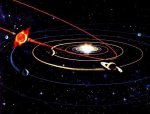
As God’s chariot-throne moves through the remaining Sabbath Songs, there is discussion of a temple veil, the one divine chariot throne with an angelic procession, and a praise of the ‘gates’. Finally, in the 13th sabbath, there is sacrifice. Nibiru’s halo is being described here as the brown dwarf moves away and dims, entering the gates back into the primordial deep. The sacrifice is its final disappearance after 3 months of the year’s first quarter. So these Songs seem to provide a framework for worship for the entire duration of the visible perihelion passage, which would amount here to about 3 months. Interestingly, the calendrical time period between Christ’s ‘birth’ (traditionally 6th January) and his sacrifice at Easter (denoted by lunar considerations) is also about 3 months, again during the first quarter of the Christian year.
There’s that number again!
The pattern of the Songs of the Sabbath Sacrifice is highly suggestive of a heavenly event occurring over three months, related in poetic literary terms. But are there any more concrete clues suggestive of a connection with Nibiru? We find just such a clue in the Psalms Scroll from Cave 11:
“…He composed 3,600 psalms and 364 songs for singing before the altar for the continual daily sacrifice, for every day of the year, and 52 songs for the sabbath offerings, and 30 songs for the new moons, for festivals and for the Day of Atonement”. (11QPs27)
Given that 364 is the number of days of the Jewish solar calendar used by the writers of the scrolls (NB not our 365.25 day solar calendar), and that the numbers 52 and 30 are clearly used with calendar and astronomical periods in minds, then what’s the number 3600 doing there? It is given prominence by denoting the overall number of Psalms, and this suggests it is highly significant. Yet it does not correlate with any known astronomical pattern.
Except one, of course: the orbital period of Nibiru!

This is more than mere coincidence. The use of the number 3600 in this context demands an explanation as to what celestial cycle is being alluded to by the Jewish authors of these ancient scrolls. It cannot simply be brushed to one side and ignored. This argument is strengthened by the seriousness with which the Qumran community held the calendar as a whole. It appears from the scrolls that one of the main reasons that this sect withdrew from the mainstream Jewish religion was that they had a fundamental disagreement with the Temple priests about which calendar should be used. The Qumran sect favoured a solar calendar of 364 days, where all months had 30 days and four days were inserted (quarterly). This could be contrasted with the official Jewish calendar of 12 lunar months, or 354 days.
“Vigorous adherence to a solar calendar is one of the strongest arguments that the Qumran scrolls come, if not from a single group, then from groups that were closely related, and united in their opposition to a calendar sanctioned in their time by a priesthood that they regarded as corrupt, in error and doomed to destruction”. (5)
An explanation for their abhorrence of the priestly use of the official Jewish calendar might stem from their wish to ensure that festival days did not fall upon sabbaths. But the 3600 figure may require us to look at this important sectarian conflict more closely. If Nibiru’s expected return was indeed the basis for dating systems and calendars, like that of Nippur and the Jewish count of years, then the actual number of days that makes up a year is of absolutely crucial significance. Sitchin notes that the ‘intercalation’ between the solar and lunar year requires an adjustment of ‘10 days, 21 hours, 6 minutes and about 45.5 seconds’, and seems to assume that this was already made in ancient times (7). Over the course of 3600 years, the difference between the use of lunar and solar calendars makes a margin of error of about 100 years!
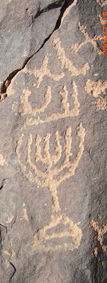
In other words, if the figure 3600 was originally intended to mean the number of years on a lunar calendar, then this would be equivalent to about 3500 solar years. Conversely, if the original 3600-year figure was intended to denote solar years, as we use in our calendar, but the actual count of years was carried out using a lunar calendar as its reference, then this would amount to an equivalent count of about 3700 years.
This whole issue would have taken on much greater significance as the 3600-year point drew around, as it did during the Messianic Era in Palestine. The disagreement about which calendar should have been applied to the count of years would make a difference of over 100 years. Could this explain the sheer length of time during which there was an expectation of the return of the Messiah in Palestine? Might this explain why Sitchin’s premise of 160BC as the date of the last Nibiruan passage does not coincide with an actual observed sighting? This might partially explain why the Messianic Star’s appearance was dated to a time about 160 years later, during the time of Herod the Great (although, uncomfortably for Christians, Herod was already dead when Jesus was supposed to have been born in Bethlehem. Whoops.)
If the use of a particular calendar was already so controversial 2000 years ago, then it might be difficult to date any previous event with clarity, at least on a Jewish calendrical framework. When you consider that attempts to offer a new chronology for ancient dates by, say, Immanuel Velikovsky (8) and David Rohl (9) can shift time periods by hundreds of years, then it is safe to say that we do not have a firm grip on ancient chronologies. The Dead Sea Scrolls may highlight the problems with Jewish dating methods, but they also clarify the significance of the 3600 year period, whether counted in lunar or solar years. Combine this with the sect’s expectation of the imminent return of a heavenly Messiah, and a powerful picture emerges that is in keeping with Sitchin’s general hypothesis about Planet X.
The Scrolls Controversy
It is only now, in the 21st Century, that anyone outside of a small and exclusive group of scholars has been able to gain insight into the content of the Dead Sea Scrolls (10). The data contained within the thousands of fragments discovered in the caves around Qumran had been, in the most part, jealously guarded by their assigned editors, generating conspiracy theories (11). Some readers of this essay may wonder as to whether there is a link between this lengthy withholding of information by the Qumran scholars, and the hidden knowledge of Nibiru contained within several scrolls.

Personally, I wouldn’t go that far. The importance of certain apocryphal texts among sect members might be a more interesting line of enquiry here, and I’m certainly interested in the scrolls containing the Books of Enoch, the Book of Watchers (!!!), the Book of Astronomical Secrets and the Book of Giants (although I haven’t yet acquired copies of all these texts). This scholarly analysis of the importance of Enoch highlights the ramifications for biblical scholarship, Judaism and Christianity:
“A central feature of the Enochian corpus is the belief that sin originated in the heavenly world (no mention of Adam and Eve), that the course of human history is pre-ordained, and that the true calendar is determined by the sun, not the moon. All these tenets are also prominent in the non-biblical scrolls from Qumran. The Enoch traditions may well have been considered as authoritative by the Qumran community and other groups…Whether a form of ‘Enochian Judaism’ can be separated from ‘Mosaic Judaism’, with which it merged but by which it was largely supplanted, is an interesting and important question currently under discussion.” (5)
Conclusion
Now that the scrolls have been fully published, after decades of procrastination, scholars are radically reassessing the nature of Judaism before the advent of Christianity. There appear to have been a multitude of forms of Judaism within Israel during the Graeco-Roman period, and the use of either lunar or solar calendars was one of the main points of division between them. They were all expecting the end of the world, and the coming Messiah (in whatever form), and the timing of the Apocalypse depended heavily upon which calendrical system was in use, and when. Although the issue of the Roman occupation no doubt had a part to play in the messianic fervour among Jewish sects at the time, the expectation of the 'end of days' was older and more entrenched than a mere backlash against the 'Kittim', as the Romans were described in the scrolls.
The Psalm Scroll clearly points towards 3600 years as the count to the end of the world, and it is quite incredible that no other scholars than Zecharia Sitchin have made this connection. What Sitchin did not appreciate at the time of writing was the confusion of calendar systems in use in Israel, varying between various Jewish groups and over different times. So the precise date of the end of the world, thought to be imminent during the Graeco-Roman era, was under fierce debate among the different Jewish sects. This we can glean from the Dead Sea Scrolls. So we are also left in considerable doubt about this apocalyptic date, beyond the fact that it was supposed to have occurred 3600 years after the Jewish count of years began.
When the end of the world failed to occur, prophetic Judaism (perhaps based on Enochian traditions) must have suffered a crisis, possibly around the time of the sacking of Jerusalem and the Temple by the Romans. The early Christians, through the Gospel of St Matthew, claimed that the Star had actually appeared pretty much on schedule, during the reign of Herod the Great, but there is little actual historical evidence for this. Nevertheless, this Christian claim indicates how the Jewish calendar system was 'reset' on the basis of the Star's Epochal return. Rabbinical Judaism then emerged to produce a strict canon of Jewish thought, and the prophetic era of the old diverse Jewish beliefs ended. Until the scrolls were recently made public, the influence of Enochian Judaism in Graeco-Roman Palestine was not appreciated.
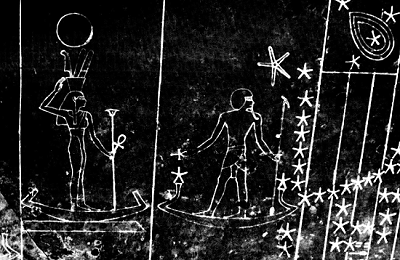
Was Nibiru the Star (12)? The scrolls suggest so, particularly the Songs of the Sabbath Sacrifice, that appears to create a framework for the worship of an anomalous celestial event spanning 3 months. But it seems that the expectation of the Star's return was not actually coincident with an observable appearance. In my book I have outlined possible astronomical reasons for this (6). I believe that the early Pauline Christians constructed the Nativity story to mythologise Jesus as Christ the Messiah, in keeping with other pagan dying and rising gods, as well as the old Jewish traditional prophecies. We certainly cannot be sure that the Star of Bethlehem was a real astronomical event. But the scrolls go a long way towards showing that the return of the dark star lay behind the messianic prophecies and the fierce sectarian clash of opinion about the timing of the end of days.
Dark Star Magical Seal
This early seal is similar to the magical amulets of the Graeco-Roman Era, which I have previously associated with dark Star symbolism. This example is much older, and is thought to belong to Queen Jezebel (13). Interesting, then that it should include the Winged Disk in a Hebrew setting, albeit with pagan overtones.
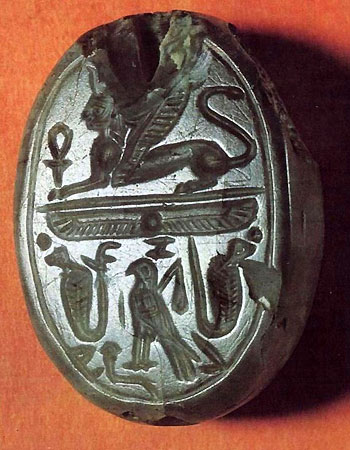
Note, in this explanation, how the Winged Disk is associated with royalty (the Sun-god Horus, also depicted here), arguably alluding to the royal association of the planet Nibiru:
"Jezebel, whose life in the 9th century B.C. is chronicled in the Bible, was married to King Ahab of Israel. As a Phoenician, the Queen was considered pagan and attempted to sway the people of Israel to abandon their God and accept her chief deity Baal, partly through forging her husband's seal on documents, according to the scriptures.
The Bible says nothing of her own seal, but archaeologists have long believed that the stone discovered in 1964 was Jezebel's, despite the ambiguity of the symbols and the name depicted on it. Multiple icons on the seal, as well as its above-average size, indicate that it belonged to a queen, the recent investigations concluded.
"The lotus (below the Horus falcon) was a symbol of gender definition and refers to a female owner," Korpel told LiveScience, "[while] the winged sun disk was a well-known symbol of royalty in and outside Israel."
Other symbols on the seal also reinforce the connection to a monarch, such as the Horus and double-cobra, a figure probably adopted from Egypt, she said." (14)
Written by Andy Lloyd, 24th October 2002, and updated November 2007
author of 'The Dark Star' (2005), 'Ezekiel One' (2009), 'The Followers of Horus' (2010) and 'Darker Stars' (2019)
References
1. Zecharia Sitchin “The Twelfth Planet” Avon 1976
2. Andy Lloyd "The Secret Knowledge of Nibiru" 2001 Available from the author
3. Michael Baigent, R. Leigh & H. Lincoln “The Messianic Legacy” p41 Corgi 1987
4. Zecharia Sitchin “The Lost Realms” p268 Avon 1990
5. P. Davies, G. Brooke & P. Callaway “The Complete World of the Dead Sea Scrolls” p200-2, 130, 163, 199, 148-9, 133-5, 127, Thames & Hudson 2002
6. Andy Lloyd “Winged Disc: The Dark Star Theory” 2000 Available from the author
7. Zecharia Sitchin “When Time Began” p19 Avon 1993
8. Immanuel Velikovsky “Ages in Chaos” Sidgewick & Jackson 1953
9. David Rohl “Legend: The Genesis of Civilisation” Arrow 1999
10. For on-line access to Dead Sea Scroll texts:
11. Michael Baigent & Richard Leigh “The Dead Sea Scrolls Deception” Corgi 1992
![]() The Dead Sea Scrolls Deception
The Dead Sea Scrolls Deception
12. Image from E. Krupp "Echoes of the Ancient Skies" p20 Oxford University Press 1983, showing Isis and Osiris as the stellar region known as the Duat, the likely location of the perihelion transit of Nibiru.
13) Utrecht University "Ancient Seal Belonged To Queen Jezebel" 29 October 2007
14) Press Agencies "Royal Seal Indicates Biblical Queen Jezebel's Power" 10 November 2007 with thanks to Joann
timesofindia.indiatimes.com article